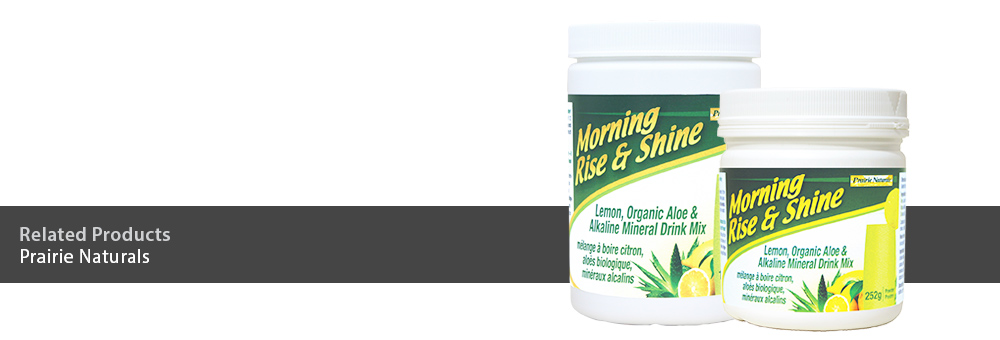

The Power of pH
Did you know that low energy levels accompanied by carbohydrate cravings, muscle soreness, low back pain or headaches, most likely indicate a pH imbalance? Many people are astonished once they realize the ill health effects caused by an overly acidic condition in the body. Yet, one of the most compelling nutritional discoveries in recent times is the role that balanced pH plays in our energy levels and overall health.
What is Optimal pH Balance?
pH is the measure of the alkalinity or acidic of a fluid. The body’s internal fluids are alkaline and are maintained at a pH close to 7.0, though the exact pH of different fluids varies. Sustaining healthy blood pH (pH 7.35-7.45) is one of the body’s most important tasks, since even slight deviations can severely compromise health. The body must constantly strive to maintain a pH balance of these critical internal fluids: blood, saliva, urine, extracellular and intracellular for all normal bodily reactions and functions to occur. Ironically, as each cell performs its task of respiration, metabolism and other normal cellular functions it secretes acidic cellular waste!
What Creates Acidic Waste?
As we age, many factors contribute to the toxic acid load stored up in our bodies. Along with cellular function, acidic waste can be caused by high-acid foods and beverages, excessive stress, intensive and prolonged exercise, pollution, over-the-counter and prescription drugs, poor lifestyle habits and even negative thinking. Fortunately, the human body is very effective at filtering out most of our daily acidic waste with the help of our lymphatic system.
Reducing Acidity Helps Maintain a Proper pH Balance
Our bodies have many ways of neutralizing or eliminating acidic waste products in order to promote optimal pH balance. Collectively, the lungs, kidneys, intestines, and skin are in control of the body’s pH balancing act. The body needs oxygen, water, acid-buffering minerals and bicarbonates to ensure adequate pH buffering. Regular breathing is a very effective way of reducing acidity. When oxygen is taken in and carbon dioxide released, carbonic acid levels are decreased in the blood. Just as important as breathing is the use of minerals and bicarbonates to neutralize or buffer acids within the cells, blood, kidneys, and the lymphatic system. Bicarbonates are naturally produced in the body, present in all body fluids, and play a major role in neutralizing acids throughout the body.
The body requires adequate alkaline reserves in order to neutralize excess levels of the following acids; carbonic, sulfuric, phosphoric, lactic, and uric. One example of this is the often-painful lactic acid created through exercise. Too much lactic acid tilts cell metabolism into excess free radical production, low oxygen levels, pain and inflammation.
Alkaline Minerals and Bicarbonate-Producing Foods Groups Buffer Acidity
Research has revealed that the body’s natural ability to produce pH-balancing bicarbonates declines with age. Mineral-rich foods, such as fruits and vegetables, are rich in precursors to bicarbonates in the form of organic acids (citric, malic, acetic etc.). The continual replacement of key minerals & bicarbonate-producing foods is essential. The most obvious source of mineral and bicarbonate buffers is the diet. The best foods are those that form the fewest acidic waste products and provide the greatest amount of acid-neutralizing minerals (potassium, magnesium, calcium, sodium) and bicarbonate precursors. The highest mineral-containing and bicarbonate-producing foods are: fruits (lemons, limes, melons, prunes, berries); root vegetables (celeriac, rutabaga, turnips, carrots, parsnips, sweet potato, white potato, onions); vegetable or vine fruit (tomatoes, zucchini, eggplant, cucumbers); leafy greens (spinach, lettuce, kale, chard); stalks (celery, broccoli); mushrooms.
Start Your Day the Alkaline Way!
One of the most convenient and effective ways to reduce the body’s level of acidity is to hydrate and energize first thing in the morning and throughout the day with an alkalizing drink. Lemon juice added to water provides alkaline minerals and bicarbonate precursors in the form of citric acid. Citric acid can be converted by the kidneys into bicarbonate and used as part of its buffering system to neutralize acid accumulating in the blood. Lemons contain the highest amount of citric acid (up to 10%) of any food. As a super-alkalizing agent, lemons play an important role in cellular detoxification and energy production. When taken every morning, an alkalizing drink (lemon water) can aid the body in naturally releasing harmful acidic impurities and other toxic build-up that slow metabolism and add weight to the abdominal area.
8 Steps to Regain pH Balance:
1. Hydrate early in the morning & between meals with a lemon-based alkaline drink mix.
2. Eat a greener diet by including green superfoods (chlorella, spirulina, barley & wheatgrass).
3. Supplement with alkaline minerals in the form of potassium, magnesium & calcium citrate.
4. Take 100 to 200 mg of CoEnzyme Q10 and a Magnesium with Malic acid liquid supplement in order to help muscles sustain aerobic (oxygen giving) energy production longer with less lactic acid formation.
5. Reduce stress by incorporating meditation, yoga, Tai Chi into a daily routine.
6. Improve circulation by breathing through the nose with mild exercise, starting with a 20-minute walk.
7. Include massage, other lymphatic exercises (rebounding).
8. Detox regularly with systemic enzyme therapy (serrapeptase), alkalizing herbal cleansing formulas and lemon drinks.
Bringing your body into the optimal pH balance does not necessarily require a radical change to your total lifestyle or eating habits. Simply adjust your diet to include more fruits and vegetables, hydrate with a lemon-based alkaline drink mix one or more times per day and follow as many of the 8 Simple Steps as possible. By focusing on alkalizing the body to maintain an optimal pH balance, you will experience a noticeable increase in your energy and overall health.
…………
RoseMarie Pierce, B.Sc.Pharm, earned her degree in Pharmacy from Dalhousie University in 1972. After extensive studies in herbal and nutritional medicine, RoseMarie integrated these disciplinary practices with her pharmacy education to become Canada’s first Holistic Pharmacist.

